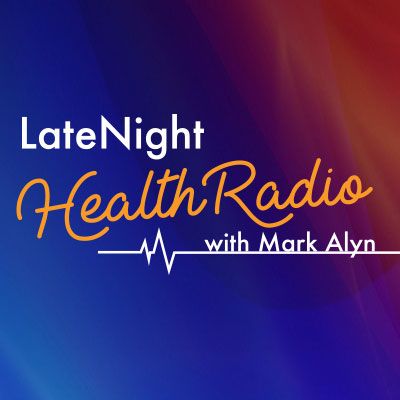Orthopedic Stem Cell Therapy (Part 1) - Joanne Halbrecht, MD 11/25/16
Jan 10, 2017 ·
13m 53s

Download and listen anywhere
Download your favorite episodes and enjoy them, wherever you are! Sign up or log in now to access offline listening.
Description
Joanne Halbrecht, MD joins Mark Alyn to talk about orthopedic stem cell therapy and how it all works. Mesenchymal stem cells (MSC's) were first isolated from bone marrow by Dr....
show more
Joanne Halbrecht, MD joins Mark Alyn to talk about orthopedic stem cell therapy and how it all works.
Mesenchymal stem cells (MSC's) were first isolated from bone marrow by Dr. Arnold Caplan in 1988. He found that when he combined the MSC's with certain chemicals in the lab, they were able to differentiate in to a variety of tissues such as cartilage, bone and tendon. Since 1988, extensive study of MSC's have proven that they do so much more! In the body, MSC's do not differentiate like they do in the lab. They are attracted to areas of inflammation and injury and act like little drug stores, releasing chemicals that signal the cells around them. MSC's are powerful anti-inflammatories, counteracting inflammation and the breakdown of cartilage. They signal the dormant stem cells in damaged cartilage to grow and proliferate. They inhibit scar tissue formation, promote the growth of blood vessels and accelerate healing. Thus, within our own bodies, we have the potential to heal ourselves.
Studies have shown that a single stem cell injection continues to relieve pain in osteoarthritic knees in 75% of the patients at 2 year follow up. A study conducted at USC and published in 2014 injected stem cells in patients after surgery for meniscus tears. No one in the control group (no stem cells) grew new meniscus, but some patients who received the stem cells regenerated more than 15% of their meniscus. The failure or re-tear rate for rotator cuff repair in a 70 year old is about 40%. A rotator cuff repair study published in 2014 with a 10 year follow up showed failure rate of 56% in a group that did not receive stem cells at the time of surgery and failure rate of 13% in those who did. The average age of patients at the beginning of the study was 61.
There are more stem cells in fat than in bone marrow. The more stem cells, the better the response. The number of stem cells in bone marrow sharply declines with age whereas the number of stem cells in fat remains fairly constant. Unless I am performing a rotator cuff repair, I harvest fat from the patient in the office under local anesthesia. The fat is injected soon after it is harvested. The procedure takes about an hour to perform. Some patients may need physical therapy afterwards. Often, return to impact activities occurs within 4 weeks. Most patients experience a beneficial effect within 2 weeks, others take up to 4 months.
air date: 11/25/16
show less
Mesenchymal stem cells (MSC's) were first isolated from bone marrow by Dr. Arnold Caplan in 1988. He found that when he combined the MSC's with certain chemicals in the lab, they were able to differentiate in to a variety of tissues such as cartilage, bone and tendon. Since 1988, extensive study of MSC's have proven that they do so much more! In the body, MSC's do not differentiate like they do in the lab. They are attracted to areas of inflammation and injury and act like little drug stores, releasing chemicals that signal the cells around them. MSC's are powerful anti-inflammatories, counteracting inflammation and the breakdown of cartilage. They signal the dormant stem cells in damaged cartilage to grow and proliferate. They inhibit scar tissue formation, promote the growth of blood vessels and accelerate healing. Thus, within our own bodies, we have the potential to heal ourselves.
Studies have shown that a single stem cell injection continues to relieve pain in osteoarthritic knees in 75% of the patients at 2 year follow up. A study conducted at USC and published in 2014 injected stem cells in patients after surgery for meniscus tears. No one in the control group (no stem cells) grew new meniscus, but some patients who received the stem cells regenerated more than 15% of their meniscus. The failure or re-tear rate for rotator cuff repair in a 70 year old is about 40%. A rotator cuff repair study published in 2014 with a 10 year follow up showed failure rate of 56% in a group that did not receive stem cells at the time of surgery and failure rate of 13% in those who did. The average age of patients at the beginning of the study was 61.
There are more stem cells in fat than in bone marrow. The more stem cells, the better the response. The number of stem cells in bone marrow sharply declines with age whereas the number of stem cells in fat remains fairly constant. Unless I am performing a rotator cuff repair, I harvest fat from the patient in the office under local anesthesia. The fat is injected soon after it is harvested. The procedure takes about an hour to perform. Some patients may need physical therapy afterwards. Often, return to impact activities occurs within 4 weeks. Most patients experience a beneficial effect within 2 weeks, others take up to 4 months.
air date: 11/25/16
Information
| Author | Late Night Health |
| Organization | Late Night Health |
| Website | - |
| Tags |
Copyright 2024 - Spreaker Inc. an iHeartMedia Company
